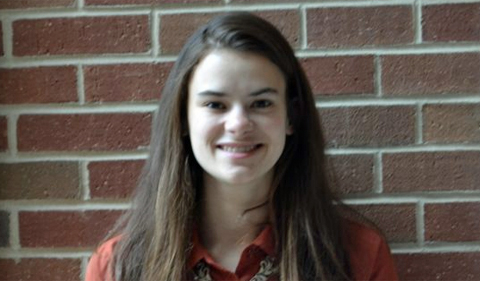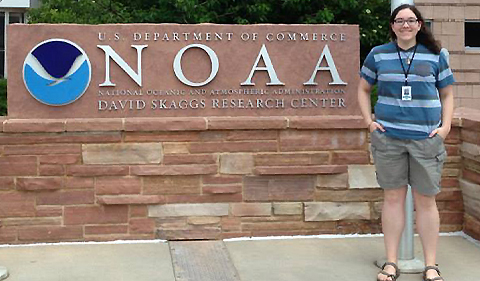
Sara Sand
By Amanda Biederman
NQPI editorial intern
Sometimes the smallest things lead us to the bigger picture. Ohio University senior engineering Physics & Astronomy Honors Tutorial College student Sara Sand said she was inspired by the possibilities of nanoscale research.
“It’s amazing in the same way that people who study astronomy, the mystery is in how far away and how big it is,” Sand said. “In material and solar cell research, the mystery is in how small it is. It all fits in the palm of your hand, but I don’t understand everything about it. I think that’s a really interesting and a cool thing to explore.”
Sand currently works under the supervision of OHIO Physics and Astronomy Professor and Nanoscale and Quantum Phenomena member Dr. Martin Kordesch. She studies the use of carbon nanotubes in the active electrode of dye-sensitized solar cells, which make up solar panels and can be used to harness energy from the sun to generate electricity.
In the summer of 2015, Sand joined Physics professor Lukas Schmidt-Mende’s lab at University of Konstanz in Konstanz, Germany. She was awarded a competitive position through the Research Internships in Science and Engineering Germany program, which allows undergraduate researchers to work alongside a Ph.D. student for the summer.
While in Germany, Sand worked under the supervision of Ph.D. student Julian Kalb, who studies hybrid solar cells. Sand studied titanium dioxide layers of hybrid solar cells to better characterize their electrical properties, which she said are currently not well understood.
Sand also had the opportunity to venture from her primary discipline and develop what she described as “completely different field and skill set.” Last summer, Sand traveled to Boulder, CO, to work at the National Oceanic and Atmospheric Administration Earth System Research Laboratory in the Chemical Sciences Division. Her internship was funded by the Ernest F. Hollings Undergraduate Scholarship.
While in Boulder, Sand used computer programming to analyze the mathematical parameters of turbine wakes under the supervision of NOAA researchers Yelena Pichugina and Alan Brewer. Wind turbines harness power from the wind as electricity. Sand calculated length and velocity deficits of turbine wakes, based on data generated from from two Doppler lidars (which use lasers for high-resolution mapping measurements) located in the Columbia River Basin in Oregon.
Sand is graduating this spring and was recently accepted to the Massachusetts Institute of Technology’s Materials Science and Engineering Ph.D. program. She said her undergraduate research projects, although diverse in their scientific approach, encompass her two passions: physics and environmental research.
“I’m an environmental nut in my non-physics life,” Sand said. “So I guess when I started physics I thought, what can I do that is something I care about? It’s really interesting stuff.”



















Comments